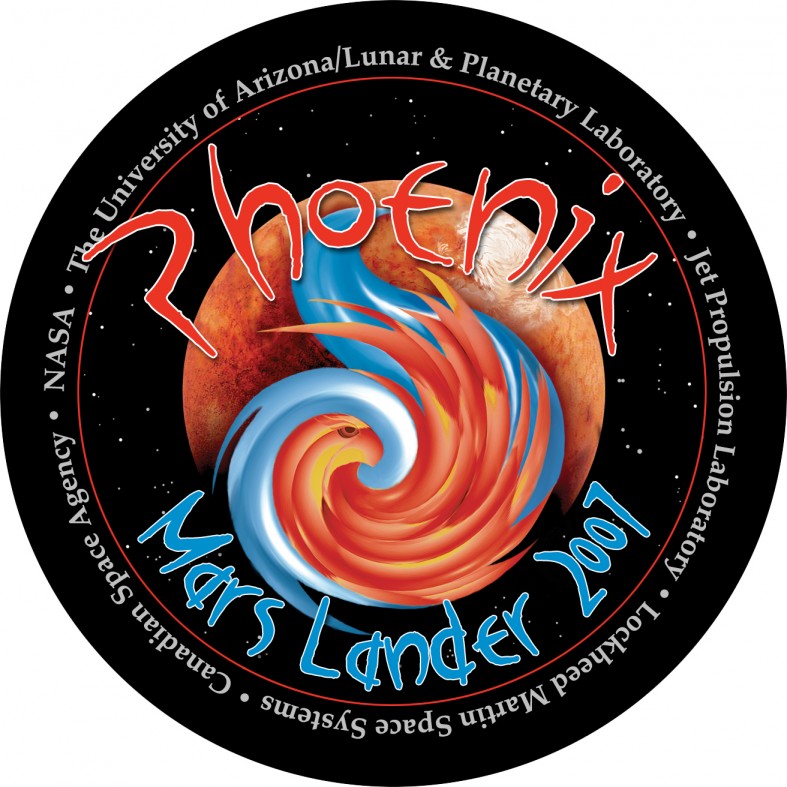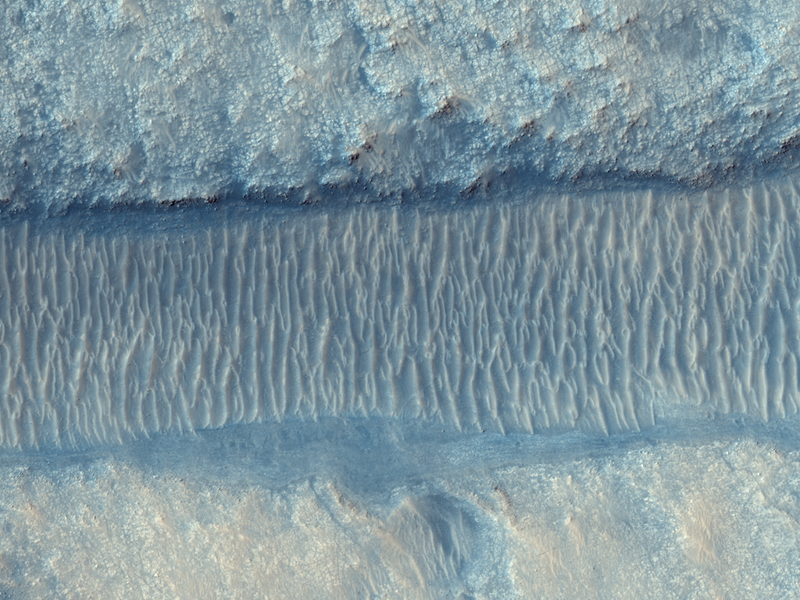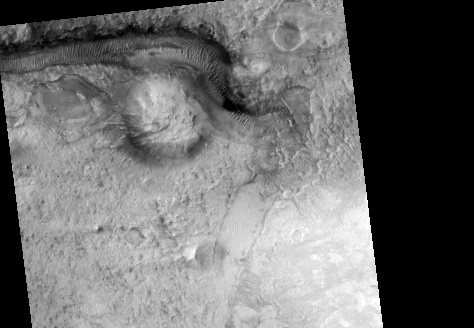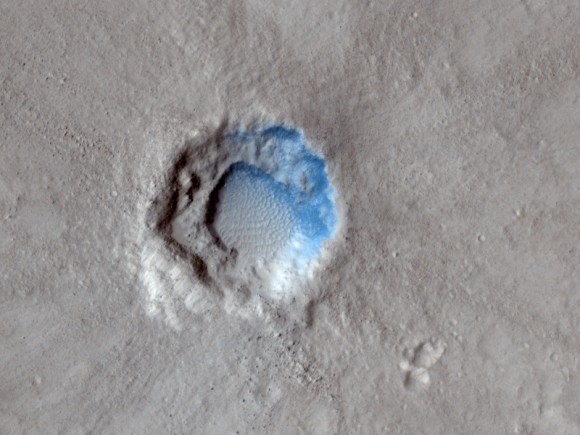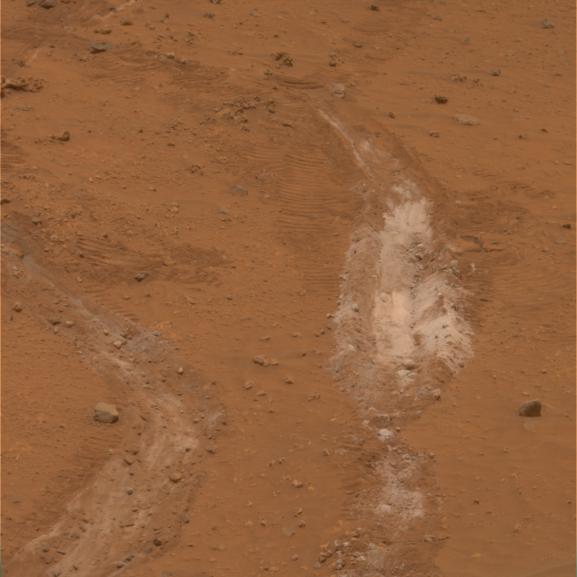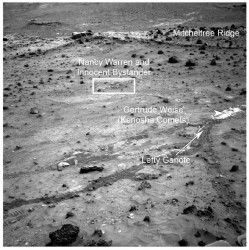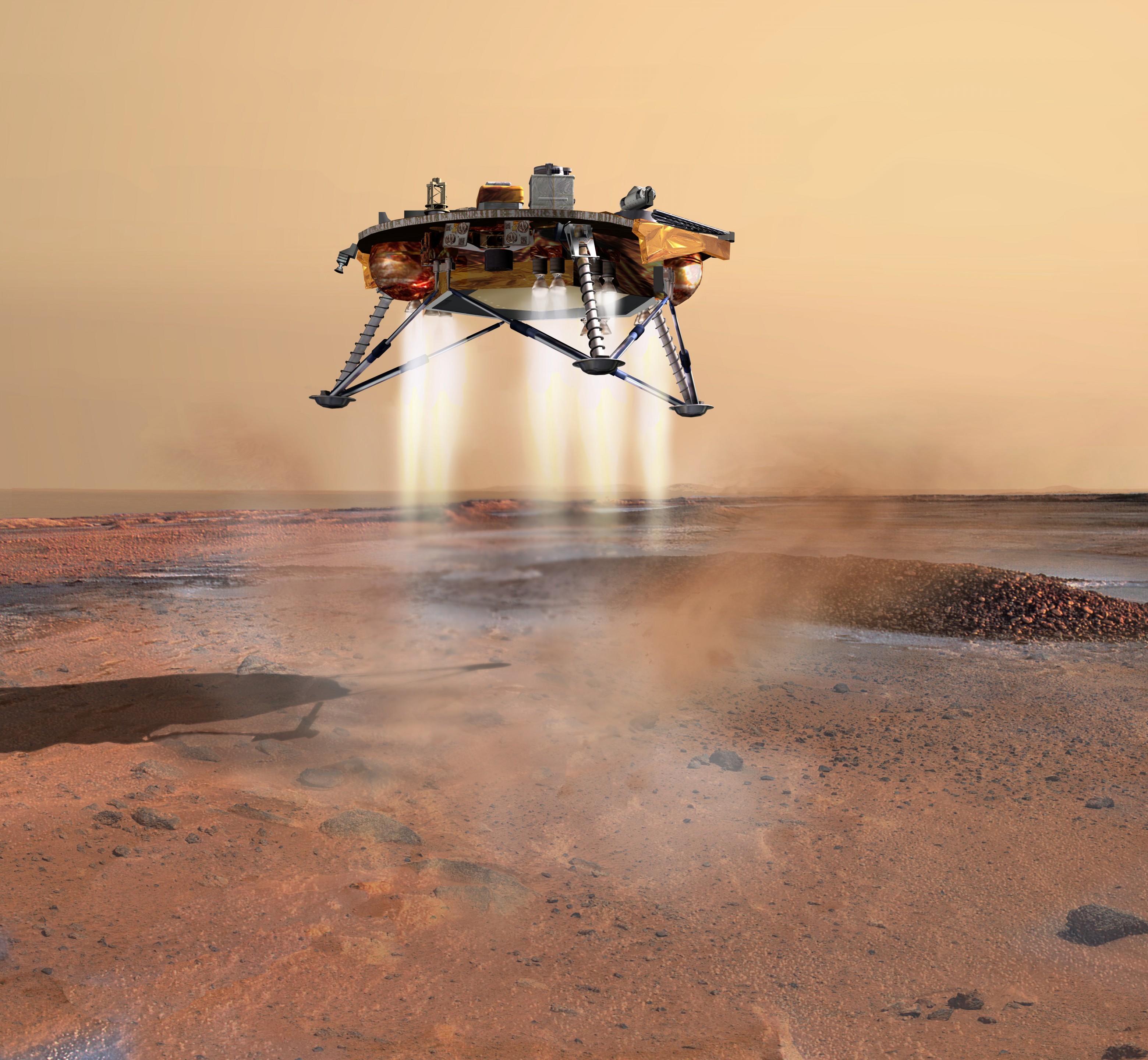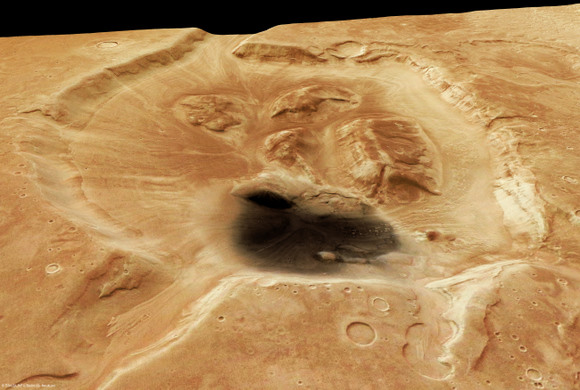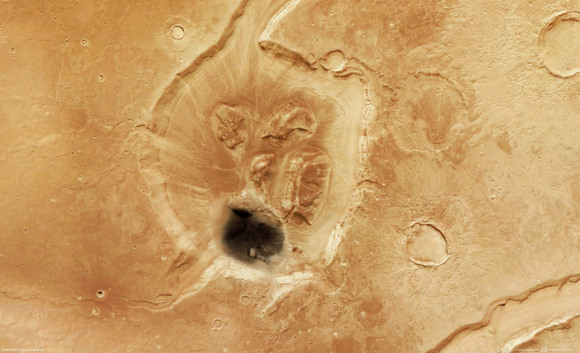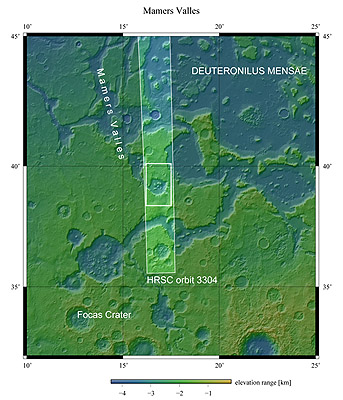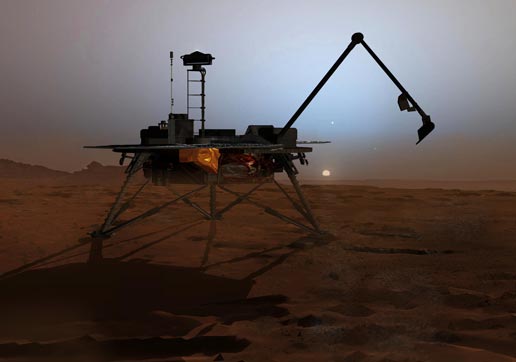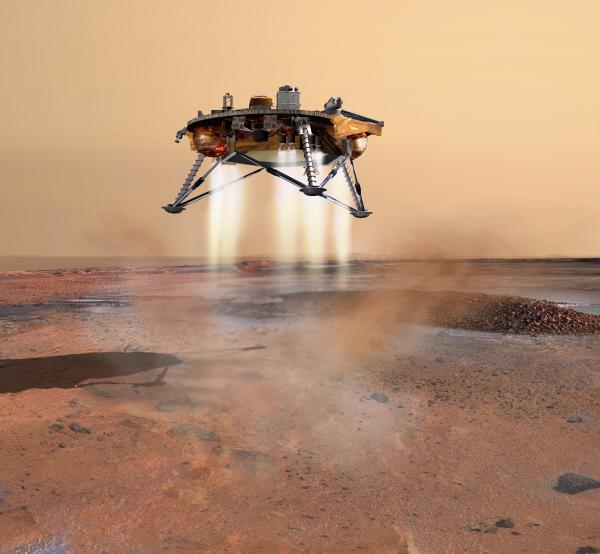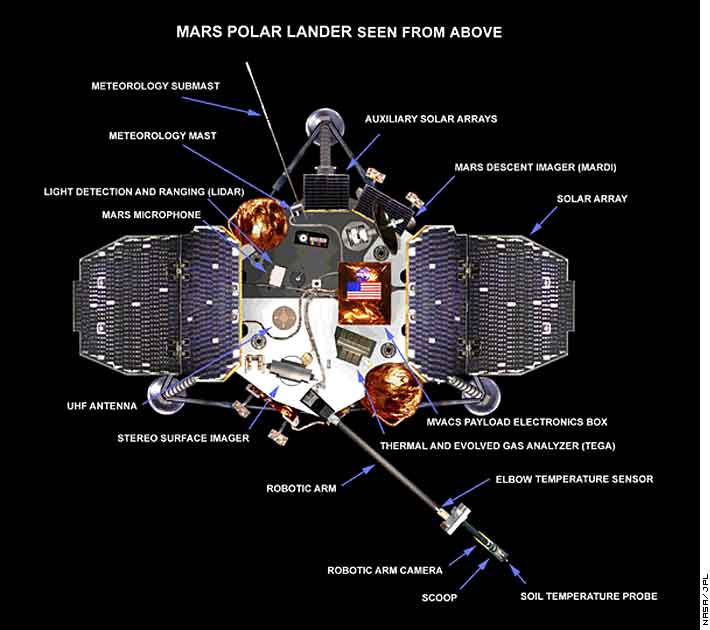The Phoenix spacecraft successfully made a soft touchdown on the northern polar region of Mars. The events of entry, descent and landing unfolded in textbook fashion, and according to telemetry sent back by the spacecraft, Phoenix sits almost perfectly level on Mars’ surface, tilted only a quarter of a degree, situated in an east to west orientation. “Everything went absolutely flawlessly,” said Doug McCuistion, NASA’s Mars exploration program director. “Things ticked off within seconds of when they should have, and the signal never went away completely even through peak heating. This spacecraft has been a flawless performer since launch. An unbelieveable performance.” NASA now has a record three operating spacecraft on the surface of Mars.
Phoenix will provide the first close-up glimpse of the Mars tundra, and with its robotic arm dig under the planet’s surface to give insight into the water and climate history of the Red Planet.
Phoenix’s fiery descent through the atmosphere and propulsive touchdown was the first non-airbag landing in since the Viking Landers in 1976. The spacecraft entered the Martian atmosphere traveling 21,000 km/hour (13,000 mph), and slowed to under 8 kph (5 mph) using aerobraking, a parachute and retro-rockets to softly touch down on the surface of Mars. The mission control center reported the helium on board the spacecraft has also successfully vented.

It was beautiful to watch the perfection and performance of the spacecraft and the reaction of the people involved with the mission. Project Manager Barry Goldstein was asked if he thought landing operations would go as well as it did. “Not in my dreams,” he said. “I’m in shock. We had all the signals, everything. We could have scripted it. We had rehearsed all the failure cases, and never in rehearsal did it go this well. This was by far the hardest part to get through. We have contingencies and multiple tries for opening the solar rays, but for EDL it has to go and it has to go on time. I’m speechless. But we have the best team in the world.”
Five years of building and testing the Phoenix spacecraft has seemingly paid off. The first telemetry returned from the spacecraft indicates that all systems are nominal. The team will make sure the solar arrays have deployed and by later this evening the first pictures should be returned. First pictures will be of the lander itself, of the solar arrays to make sure they have deployed.
Principal Investigator Peter Smith said the science team is ready. “We’ll start surface operations right away,” he said. “We’ll get that first picture to make sure the spacecraft is healthy. We’re looking forward to great science and maybe even an extended mission (past the expected 90 day mission)! This is a world mission. We are doing this for everybody.”


